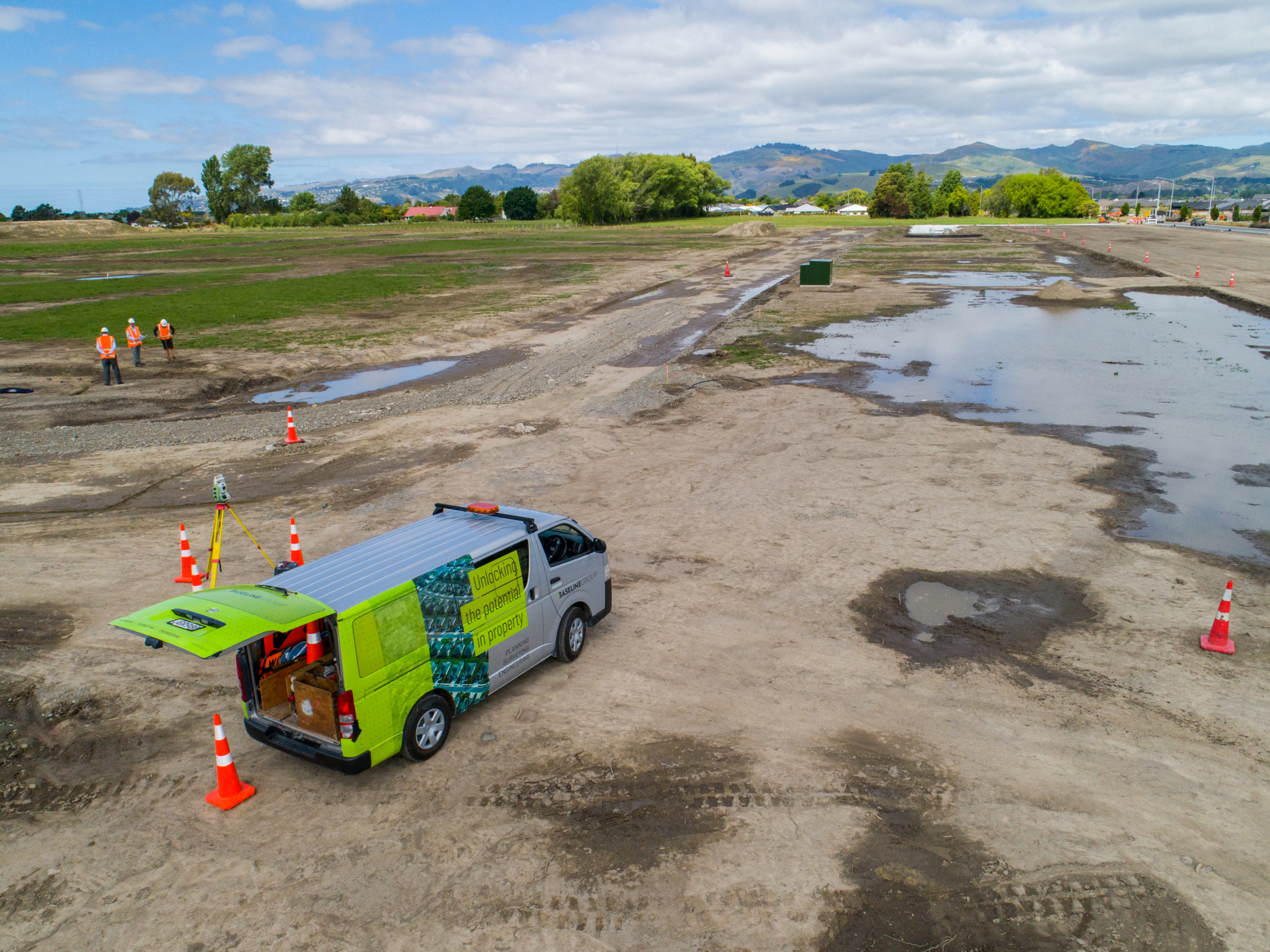By Anna Bensemann, Senior Planner, Baseline Group, Ph 0800123257 E: info@ blg.nz | Apr 17, 2024

Land development projects play a crucial role in shaping urban and rural landscapes, providing spaces for housing, commerce, and infrastructure. However, these projects can also have significant environmental impacts, particularly concerning sediment runoff into waterways. Sediment management during land development is essential to mitigate these impacts and protect water quality, ecosystems, and human health.
Why Sediment Management Matters?
Water runoff from construction sites can carry pollutants such as sediment-bound nutrients, heavy metals, and chemicals into nearby water bodies. These pollutants degrade water quality, harm aquatic life, and may pose risks to human health. Effective sediment management throughout construction or earthworks is critical to prevent these contaminants from entering waterways and safeguarding water quality for various uses, including drinking, recreation, and aquatic habitats.
Sediment deposition in streams, rivers, and wetlands can smother aquatic habitats, disrupt food chains, and alter ecosystem dynamics. This can lead to the loss of biodiversity, decline in fish populations, and degradation of valuable natural resources.
Uncontrolled water or stormwater runoff contributes to soil erosion, which can lead to land degradation, loss of fertile topsoil, and increased sedimentation in water bodies. Excessive sedimentation can also exacerbate flooding by reducing waterway capacity and altering flow patterns. Implementing sediment management measures helps mitigate erosion, reduce sediment loads in runoff, and lessen the risk of downstream flooding.
What are Simple Techniques for Effective Sediment Runoff Control?
Silt fences are temporary barriers installed along the perimeter of construction sites to intercept and contain sediment-laden runoff. These fences consist of geotextile fabric stretched between posts and are effective in trapping sediment while allowing water to pass through. Planting vegetative buffers, such as grass strips, trees, and shrubs, along waterways and slopes can significantly reduce sediment runoff. The roots of vegetation stabilize soil, enhance infiltration, and capture sediment, preventing it from reaching water bodies. Sediment basins are temporary detention ponds designed to capture and settle out sediment from runoff before it enters water bodies, and also reduce the pollutants discharged to water.
Implementing best practices on construction sites, such as minimizing exposed soil areas, using sediment barriers, and scheduling earthmoving activities during dry weather, can significantly reduce sediment runoff. Proper site design, erosion control measures, and sediment management planning are key components of effective sediment control throughout the project. During the planning phase, consideration of a sediment control plan ensures thought has gone into how sediment will be controlled during earthmoving stages of development. A good land development company will provide this as part of the design of works.
Sediment management plays a critical role in mitigating environmental impacts during land development projects and are often required as part of the resource consents process. By implementing simple yet effective techniques developers and contractors can make a substantial difference in controlling sediment runoff, protecting water quality, and preserving natural ecosystems. This is a benefit for whole communities.
Articles you might be interested in
- What the New Planning System Will Mean for Future Developments
- Granny Flats are not lawful – Yet
- Key Fundamentals of Urban Design and how these are showcased in Rolleston
- Target Price Contracts: A Smarter Way for Developers to Avoid Budget Blowouts
- New RMA rules tighten hazard controls for urban development
- The enjoyment of private property rights
- How AI can shape our future?
- What are development contributions and how might they affect you?
- Granny Flats to Be Allowed, Without Consent: What Homeowners Need to Know
- Adapting to a Depreciating New Zealand Dollar (NZD)